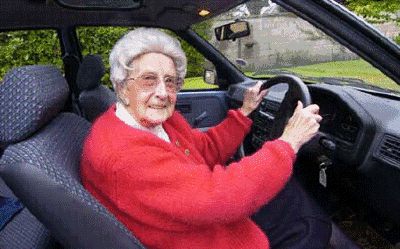

 | |


Older Adult Drivers:
Get the Facts
How can deaths and injuries be prevented?
In 2019, there were 33 million licensed drivers ages 65 and older in the United States. Driving helps older adults stay mobile and independent. But the risk of being injured or killed in a motor vehicle crash increases as you age. An average of 500 older adults are injured every day in crashes.
Thankfully, there are steps that older adults can take to stay safer on the roads. How big is the problem? In 2008, more than 5,500 older adults were killed and more than 183,000 were injured in motor vehicle crashes. This amounts to 15 older adults killed and 500 injured in crashes on average every day. There were 33 million licensed older drivers in 2018, which is a 23 percent increase from 2015.
Who is most at risk? Per mile traveled, fatal crash rates increase starting at age 75 and increase notably after age 80. This is largely due to increased susceptibility to injury and medical complications among older drivers rather than an increased tendency to get into crashes.
Age-related declines in vision and cognitive functioning (ability to reason and remember), as well as physical changes, may affect some older adults' driving abilities. Across all age groups, males had substantially higher death rates than females. How can older driver deaths and injuries be prevented?
Existing protective factors that may help improve older drivers’ safety include:
High incidence of seat belt use: More than three in every four (77%) older motor vehicle occupants (drivers and passengers) involved in fatal crashes were wearing seat belts at the time of the crash, compared to 63% for other adult occupants (18 to 64 years of age).
Tendency to drive when conditions are the safest: Older drivers tend to limit their driving during bad weather and at night and drive fewer miles than younger drivers.
Lower incidence of impaired driving: Older adult drivers are less likely to drink and drive than other adult drivers.7 Only 5% of older drivers involved in fatal crashes had a blood alcohol concentration (BAC) of 0.08 grams per deciliter (g/dL) or higher, compared to 25% of drivers between the ages of 21 and 64 years.

Older adults can take several steps to stay safe on the road, including: Older adults can take several steps to stay safe on the road. Exercising regularly to increase strength and flexibility. Asking your doctor or pharmacist to review medicines–both prescription and over-the counter–to reduce side effects and interactions. Having eyes checked by an eye doctor at least once a year. Wear glasses and corrective lenses as required. Driving during daylight and in good weather. Finding the safest route with well-lit streets, intersections with left turn arrows, and easy parking.
Planning your route before you drive. Leaving a large following distance behind the car in front of you. Avoiding distractions in your car, such as listening to a loud radio, talking on your cell phone, texting, and eating. Considering potential alternatives to driving, such as riding with a friend or using public transit, that you can use to get around.
we can evaluate an elderly driver to determine whether or not the driver still has the driving skills to stay safe on the road, please contact Abel Perez for more details at drivingeasy1@optonline.com or at 347-488-6253, you can also contact the office at 718-239-7101.

